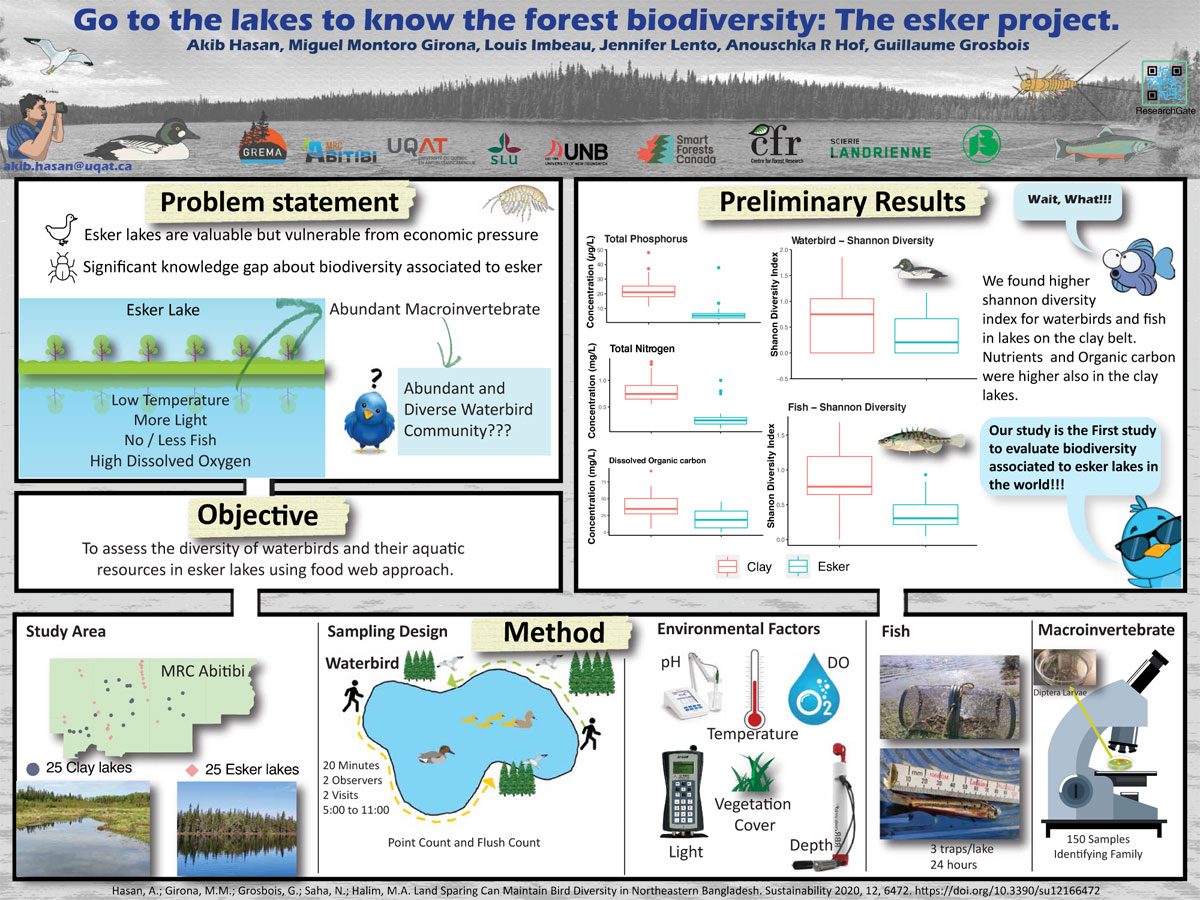
Eskers are complex geological formation formed by glaciers during the last ice age. Eskers provide now crucial resources in all northern countries such as drinking water, sand/gravel, outdoor recreational sites and productive forests. However, there is a huge knowledge gap about the biodiversity and functioning of eskers, and baseline ecological information is missing to consider these unique formations in the sustainable management and conservation strategies. Esker lakes are different as compared to other boreal lakes as they are fed by groundwaters and precipitations and are thus usually not connected to other aquatic ecosystems. Thus, esker lakes often have reduced or absent fish communities, which promotes a unique diversity and abundance of aquatic invertebrates at the base of the food web for waterbirds. The objective of the study is to characterize the waterbird communities associated to esker lakes and identify the resources and ecological factors that determine their presence, abundance, richness, and diversity. The study was led in the MRC-Abitibi territory for its numerous lakes and esker formations. Aquatic invertebrate communities are currently characterized as they represent important feeding resources for waterbirds and are important ecological indicator of the lake health. Fifty lakes were sampled including lakes situated on eskers and lakes on the clay belt. The observational point and flush count method were applied to identify the bird communities. We found higher Shannon diversity index for waterbirds in clay lakes (mean = 0.45) compared to esker lakes (mean = 0.31) and for fish the index value in clay lakes (0.76) were also higher than lakes on esker (0.10). Additionally, nutrients in clay lakes (mean total nitrogen = 1370 µg/L, total phosphorus = 19.93 µg/L and organic carbon = 3190 µg/L) were higher than in esker lakes (mean total nitrogen = 450 µg/L, total phosphorus = 6.93 µg/L and organic carbon = 2300 µg/L). This project permits to characterize for the first time the unique biodiversity associated to esker lakes and evaluate the ecological value of those ecosystems.
